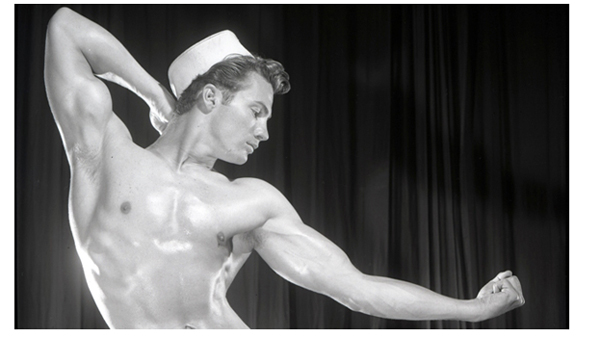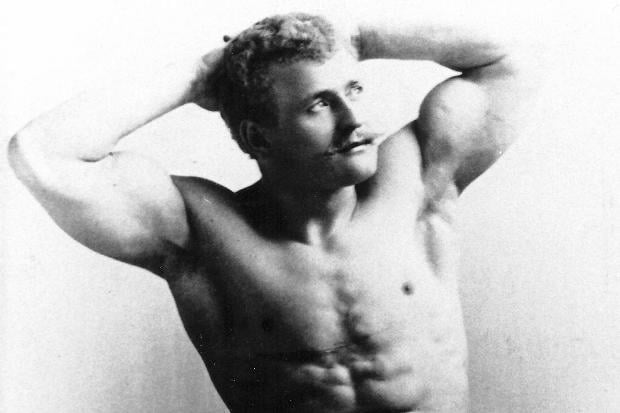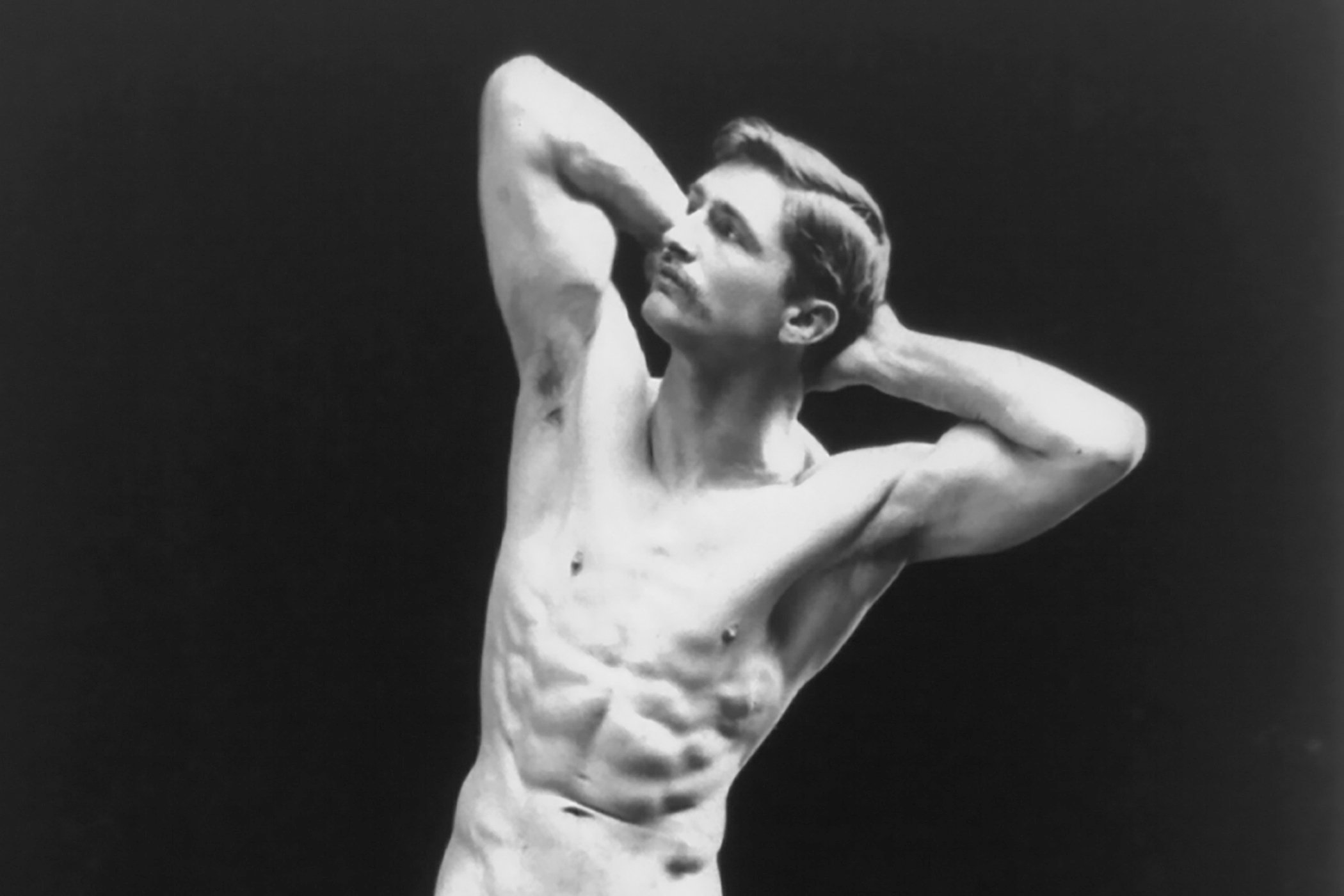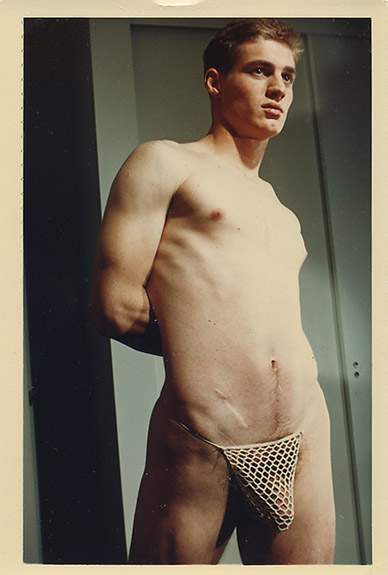Bodybuilder led to birth of gym culture in America
Before the models of Bob Mizer’s Athletic Model Guild redefined masculinity to a puritanical American audience, there was the original ‘strong man,’...
2 min read
Bob Mizer Foundation : May 9, 2017 11:20:00 AM

Though male physique photography pioneer Bob Mizer set out to define masculinity in post-war America, his idea of the perfect male body was a somewhat different one from that of previous centuries. There were similarities, of course, but Mizer’s works – and those works of more recent artists – showed but a snapshot of what society deemed the ideal male form.
 “Many of Bob Mizer’s earlier photos portray his models as classic Greek or Roman soldiers, slaves, gladiators, royalty, and nothing short of godlike,” says Keith Foote, vice president of operations for the Bob Mizer Foundation. “His costumes included tunics, swords and sandals, and his set pieces included statuary. There is a very obvious homage to the male body of the ancient world in much of his photography from the first two decades of his career.”
“Many of Bob Mizer’s earlier photos portray his models as classic Greek or Roman soldiers, slaves, gladiators, royalty, and nothing short of godlike,” says Keith Foote, vice president of operations for the Bob Mizer Foundation. “His costumes included tunics, swords and sandals, and his set pieces included statuary. There is a very obvious homage to the male body of the ancient world in much of his photography from the first two decades of his career.”
Mizer’s earlier models embodied the physical perfection of men throughout antiquity. According to a series of articles published by the BBC, ancient Romans and Egyptians highly valued youth and facial symmetry. Statues from the Greco-Roman world, from Apollo to Alexander the Great show men possessing low percentages of body fat, as well as lean to lightly muscular bodies. The overmuscled bodies with protruding veins of today’s bodybuilders would have looked quite out of place in ancient Greece or ancient Rome, according to the articles.
Art in the Dark Ages and the Middle Ages touted virtue and moral cleanliness, with little attention paid to the subject’s body.
 “Men depicted in works of art from the Middle Ages and Renaissance were slim and slender, had fair hair and even fairer skin,” Foote says. “Men here weren’t celebrated as being physically fit, tough, or traditionally masculine. There was a big emphasis on religion in these works instead.”
“Men depicted in works of art from the Middle Ages and Renaissance were slim and slender, had fair hair and even fairer skin,” Foote says. “Men here weren’t celebrated as being physically fit, tough, or traditionally masculine. There was a big emphasis on religion in these works instead.”
The Renaissance period saw a harkening back to the more traditional standards of male beauty portrayed in the ancient world. Michelangelo’s David is perhaps the most well-known depiction of the ideal male body in all of Western civilization.
“Humankind in general was becoming more enlightened, and so we began to see this marvel of man as being the pinnacle of the wonders of nature and creation,” Foote notes. “Artists were easily able to find young males to model for them, because any artist worth his salt in the Renaissance had an apprentice.”
Throughout the course of the next 300 years, from the 1600s to the early 19th century, nudity and the depiction of the nude male body were viewed as backward and savage, with an emphasis on clothes and fashion becoming more prominent among Western males. Colorful, elaborate outfits (and wigs) were the order of the day for the rich elite, with the male body nothing more than a vehicle through which to showcase the wealth that one wore literally on his shoulders.
 The 19th century showed more balance between male fashion and a man’s body and physical appearance. Whereas the ancient Greeks and Romans believed facial hair on youths to be taboo (and suited only for older men), beards, mustaches and sideburns were the mark of a masculine man. The mid- to late 19th century also saw the rise of the circus strong man – bodybuilders who traveled with carnivals and demonstrated great feats of strength, proud to flaunt their bodies and rippling muscles in loin cloths. The appreciation for the male body, unadorned and natural, was finally back in style.
The 19th century showed more balance between male fashion and a man’s body and physical appearance. Whereas the ancient Greeks and Romans believed facial hair on youths to be taboo (and suited only for older men), beards, mustaches and sideburns were the mark of a masculine man. The mid- to late 19th century also saw the rise of the circus strong man – bodybuilders who traveled with carnivals and demonstrated great feats of strength, proud to flaunt their bodies and rippling muscles in loin cloths. The appreciation for the male body, unadorned and natural, was finally back in style.
 “Strong men like Eugene Sandow, who rose to popularity when the camera was still a relatively new invention, really set the stage for men to be photographed and appreciated as pictures of good health,” Foote says. “Without these strong men of the late 19th and early 20th centuries, who knows what kind of artist Bob Mizer would have become?”
“Strong men like Eugene Sandow, who rose to popularity when the camera was still a relatively new invention, really set the stage for men to be photographed and appreciated as pictures of good health,” Foote says. “Without these strong men of the late 19th and early 20th centuries, who knows what kind of artist Bob Mizer would have become?”

Before the models of Bob Mizer’s Athletic Model Guild redefined masculinity to a puritanical American audience, there was the original ‘strong man,’...

Author’s note: This is the first part of a three-part series on bodybuilder and health advocate Bernarr Macfadden. Look for part II on our blog next...

Author’s note: This is part two of a two-part series on the history of Champion Studio and its founder, Walter Kundzicz.

Author’s note: This is the first in a two-part series on the history of Champion Studio